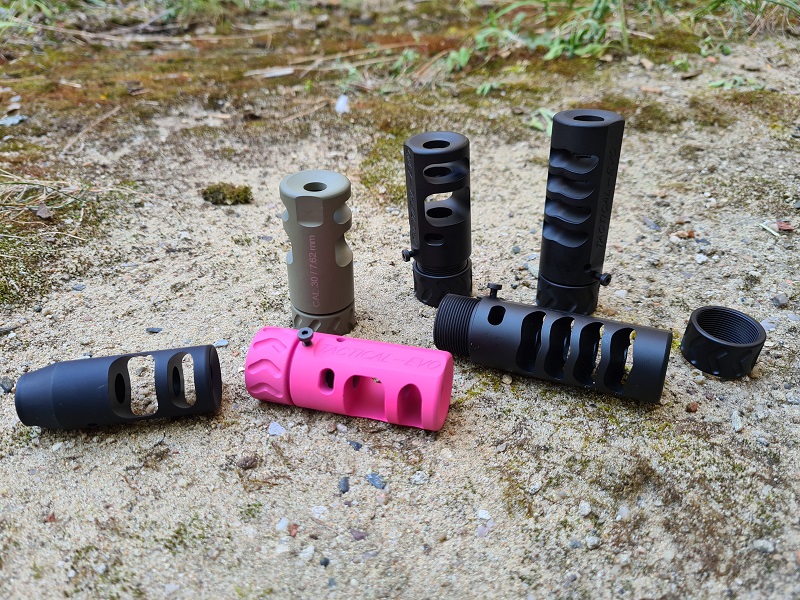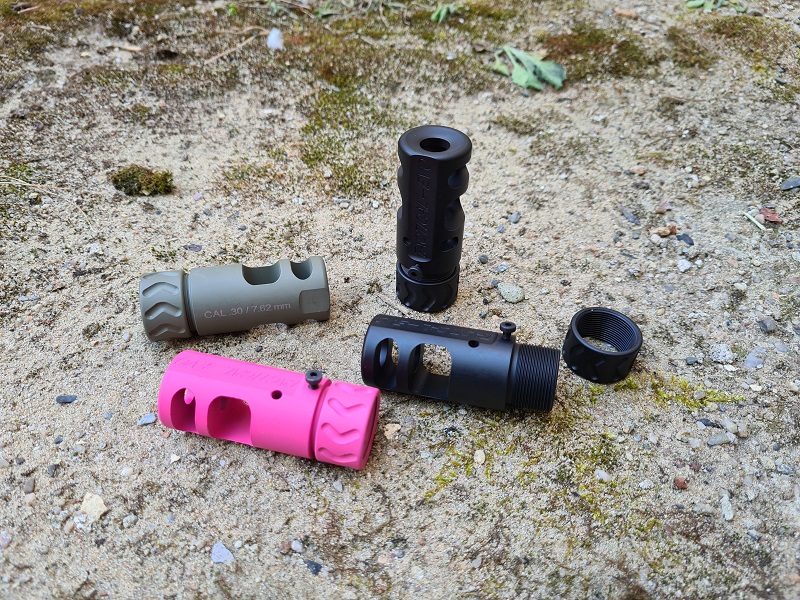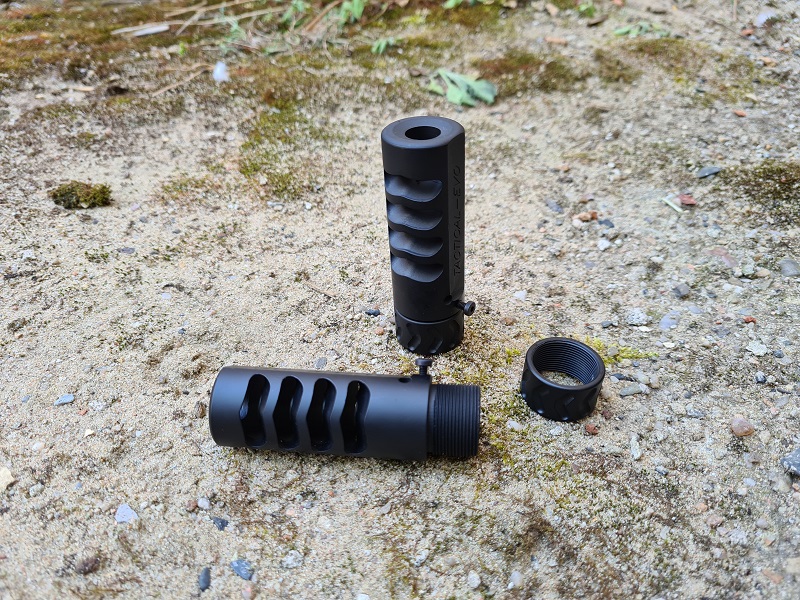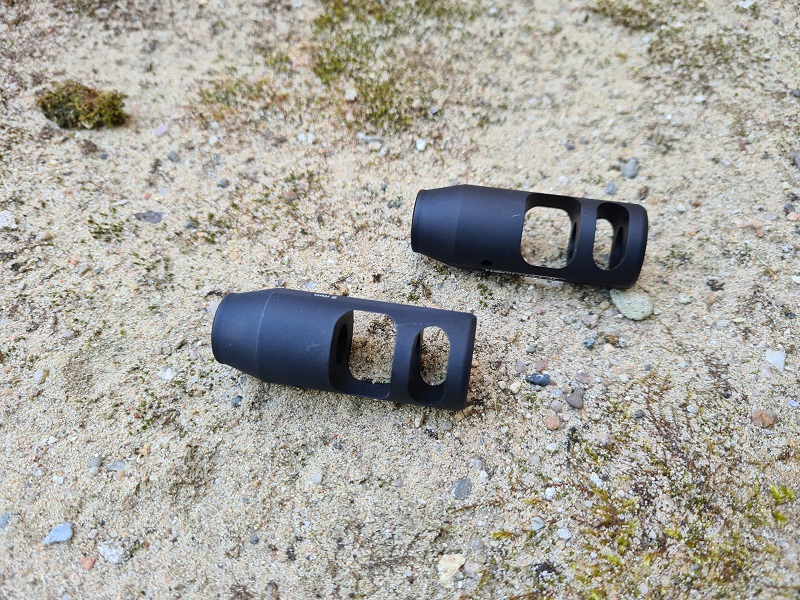- Dušan Mandát
- News
- 0 likes
- 3658 views
- 0 comments
- bipod, bipods, tactical bipods, bipod fclass
Stroke compensator or muzzle brake?
Both stroke compensators and muzzle brakes are devices that are placed on the muzzle of firearms and have a very specific purpose. Both devices are very similar and work on the same principle. Their goal is to eliminate the negative effects of forces acting on the shooter and the weapon. In other words, they adjust the direction of the gas flow from the barrel so that the effect on the shooter and the weapon is as small as possible.
Currently, it is an accessory without which many shooters can no longer imagine their "existence". And honestly, it's no wonder, because the pros far outweigh the cons. Stroke compensators, as the name suggests, eliminate muzzle stroke. Part of the escaping gases during the shot is diverted upwards. The resulting reaction subsequently counteracts the knocking moment, which results in a smaller muzzle lift when fired.
Very generally, it can be said that stroke compensators are mainly used where it is necessary to shoot accurately and at the same time dynamically. A typical case is shooting competitions, where it is desirable for the shooter to control the shot as much as possible and to be able to aim at a new target all the more quickly. This makes shooting faster and more accurate.
Muzzle brakes are primarily intended for long repeating or self-loading weapons, and their basic function is to force the escaping gases into an area perpendicular to the axis of the barrel. This is achieved by the fact that the forces of the flowing gases act exclusively forward and thus eliminate the recoil of the weapon and its unwanted movement backwards.
However, this is only the basic specification of how a muzzle brake works.

Modern muzzle brakes, whose development is supported by new technologies and production possibilities, have much more potential.
Modern muzzle brakes hide not only maximum recoil compensation, so you don't get as big a "box" in the shoulder as when you shoot without it, but at the same time, if you use a muzzle brake with lateral compensation, the weapon will only minimally move from its place and to the side during the shot. You can therefore very quickly aim again without having to search for the target again, as is the case with classic muzzle brakes. A high-quality muzzle brake will therefore considerably reduce the recoil and at the same time prevent the side recoil of the weapon!
A frequent and much neglected factor when choosing a muzzle brake is its installation on the muzzle of the barrel. Some models require special tools or, in extreme cases, you even have to use a lathe to seat the brake correctly. When choosing, do not forget about the quality of processing and the material from which the product is made.
There are a number of muzzle brakes on the current market and it is no wonder, this is a very interesting accessory that has a significant importance when shooting. Domestic manufacturers include, for example, products of the TACTICAL EVO brand, which belong to the TOP class and are successfully sold all over the world.
TACTICAL EVO currently produces muzzle brakes under the trade names SAR2, F1 PRO and PCC. These are modern and highly efficient muzzle brakes, which of course also include a lateral compensation system. Their assembly is very easy, when a reliably functioning locking system using a counter nut is used to secure them to the barrel.

Muzzle brake SAR2
The SAR2 muzzle brake is a highly effective three-chamber muzzle brake with lateral compensation to prevent side recoil of the weapon, and its chambers are designed in such a way that there is no negative flow of after-shot gases towards the shooter.

F1 PRO muzzle brake
The muzzle brake F1 PRO is a highly effective professional five-chamber muzzle brake with lateral compensation preventing side recoil of the weapon. Its chambers are designed to not only extremely reduce the recoil and lateral rebound of the weapon, but at the same time prevent its vertical rebound. As with the SAR2, this is a very well thought out muzzle brake.
Among the technical parameters, it is worth mentioning the easy installation, locking of the brake using a locking nut, the possibility of attaching a tape (heat shield) and a surface for easy placement of the spirit level during installation. Both models are produced for all common calibres (.243, .265, .308, .338) and have M18x1 or 5/8-24UNF threads. The manufacturer allows custom production for specific calibres as well as the choice of surface finish. It is possible to choose any colour from CERAKOTE production or choose classic chemical blackening.

PCC muzzle brake
The PCC muzzle brake is an efficient three-chamber muzzle brake with compensation, and its chambers are designed to prevent negative flow of after-shot gases towards the shooter. The PCC muzzle brake is designed primarily for weapons suitable for this category. The PCC muzzle brake is manufactured from aviation duralumin AW 7075 for a 1/2x28UNF thread.
However, in order not only to describe the advantages of the above-mentioned supplements, it is also necessary to mention their disadvantages. Both compensators and muzzle brakes can affect the position of the centre point of impact as well as dispersion. It is necessary to realize that weapon manufacturers try to tune the vibration of the barrel during the shot to an optimal value, so if we add any accessory to the muzzle, the course of the oscillation can change and the whole system can be "out of tune". So far, however, it seems that the advantages clearly outweigh the disadvantages, and it should also be mentioned that many weapon manufacturers are counting on the placement of additional components on their weapons.
Whatever muzzle brake or compensator you choose for your weapon, remember that shooting as a whole is about the maximum interplay of many factors, and the better prepared you are for your weapon, the greater your chance of hitting the target.
Good luck!









Comments (0)